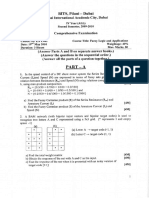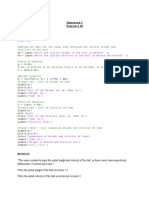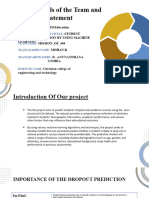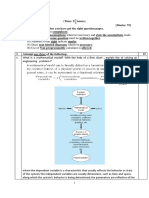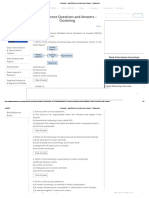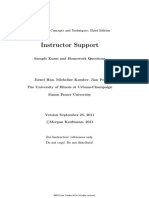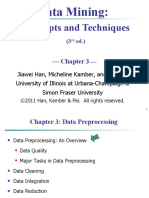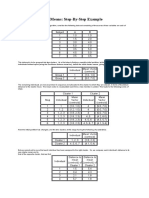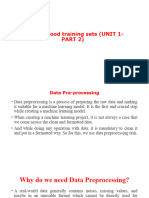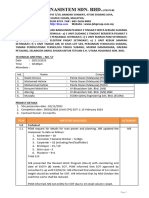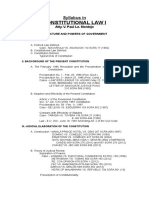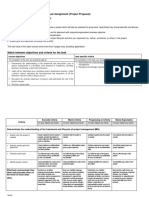0% found this document useful (0 votes)
163 views6 pagesData Preprocessing for ML Models
The experiment aimed to apply various data preprocessing techniques on a dataset to prepare it for machine learning algorithms. The steps included checking for missing values and handling them by dropping rows, encoding categorical variables, splitting the data into training and test sets, and performing feature scaling. The code demonstrated reading in a dataset, checking for missing values, label encoding categorical variables, splitting the data, and scaling features.
Uploaded by
mohan kukrejaCopyright
© © All Rights Reserved
We take content rights seriously. If you suspect this is your content, claim it here.
Available Formats
Download as PDF, TXT or read online on Scribd
0% found this document useful (0 votes)
163 views6 pagesData Preprocessing for ML Models
The experiment aimed to apply various data preprocessing techniques on a dataset to prepare it for machine learning algorithms. The steps included checking for missing values and handling them by dropping rows, encoding categorical variables, splitting the data into training and test sets, and performing feature scaling. The code demonstrated reading in a dataset, checking for missing values, label encoding categorical variables, splitting the data, and scaling features.
Uploaded by
mohan kukrejaCopyright
© © All Rights Reserved
We take content rights seriously. If you suspect this is your content, claim it here.
Available Formats
Download as PDF, TXT or read online on Scribd
/ 6


